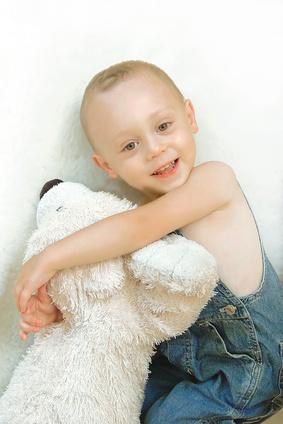Every parent knows that kids often seem like they have a never-ending amount of boundless energy; however, some hyper kids’ behavior is the result of ADHD. As the number of children diagnosed with Attention Deficit Hyperactivity Disorder continues to increase, more parents are turning away from medicine and seeking less invasive ways to treat their children. Treating your ADHD child with behavioral modification instead of medication may be a desirable option if you can dedicate time and effort to creating a change in your child’s behavior.
Step 1
Create a list of problems that your child’s ADHD presents. While the hallmarks of ADHD are the presence of boundless energy and the inability to focus on tasks, these difficulties can manifest themselves in different ways. To address your child’s problems effectively, you must first identify them. Before you begin to work on behavior modification, create a list of five to 10 specific problems that your child seems to have. For example, if you have to ask your child numerous times to do something before he finally absorbs your request, write this down as a specific problem.
Step 2
Establish a routine. As Health Central reports, children who suffer from ADHD often struggle with change. You can avoid this struggle all together by establishing, and not deviating from, a routine. If, for example, you make taking the dishes to the sink after dinner a routine, your child will likely complete this task. If the task is something you only asked him to do periodically, he may not.
Step 3
Acknowledge the problem, but do not allow your child to hide behind it. After diagnosis, many children develop learned helplessness, or the belief that because they have ADHD they simply can’t focus. If you want your child to overcome his ADHD without medication, you must get past this misconception. Explain to your child that, while ADHD does make things more challenging, it does not mean that he is incapable of focusing or succeeding both socially and academically.
Step 4
Focus on one problem at a time. Look back at your list, and select one issue to focus on first. If you try to address all the issues at once, you will overwhelm the child, and your attempts will likely prove ineffective.
Step 5
Use trial and error. When trying to modify your child’s behavior, you will likely try some methods that prove ineffective. For example, if you attempt to assist your child by having him repeat directions back to you when you give them to him, but this fails to increase the frequency with which he follows directions, you may want to try a different method. You never know what will work until you try, but you shouldn’t feel tied to a method just because you gave it a go.
Step 6
Seek professional help. Because every ADHD child is different, there is no one-size-fits-all behavioral cure. To be optimally effective in your efforts, you should consider seeking professional help, reports MSN. A professional behavioral modification expert can provide specific ideas for you to try, based on your child’s unique needs. Ask your child’s pediatrician to refer you to one of these individuals.
Step 7
Partner with your child’s school. If you want your efforts to stick, consistency is key. Speak to your child’s school, explaining the methods that you are using at home, and request that the teacher adopt similar methods in the classroom. The school, eager to help the child, will likely comply and may even be able to suggest some additional intervention options.
Step 8
Be patient. Unlike medicine that can affect change almost instantly, behavioral methods take time and consistency, reports MSN. Even if your methods do not work immediately, stick with it. After time, you will likely see that your efforts are making a difference in your child’s behavior.
Photo Credit
- Child image by ivan kmit from Fotolia.com





